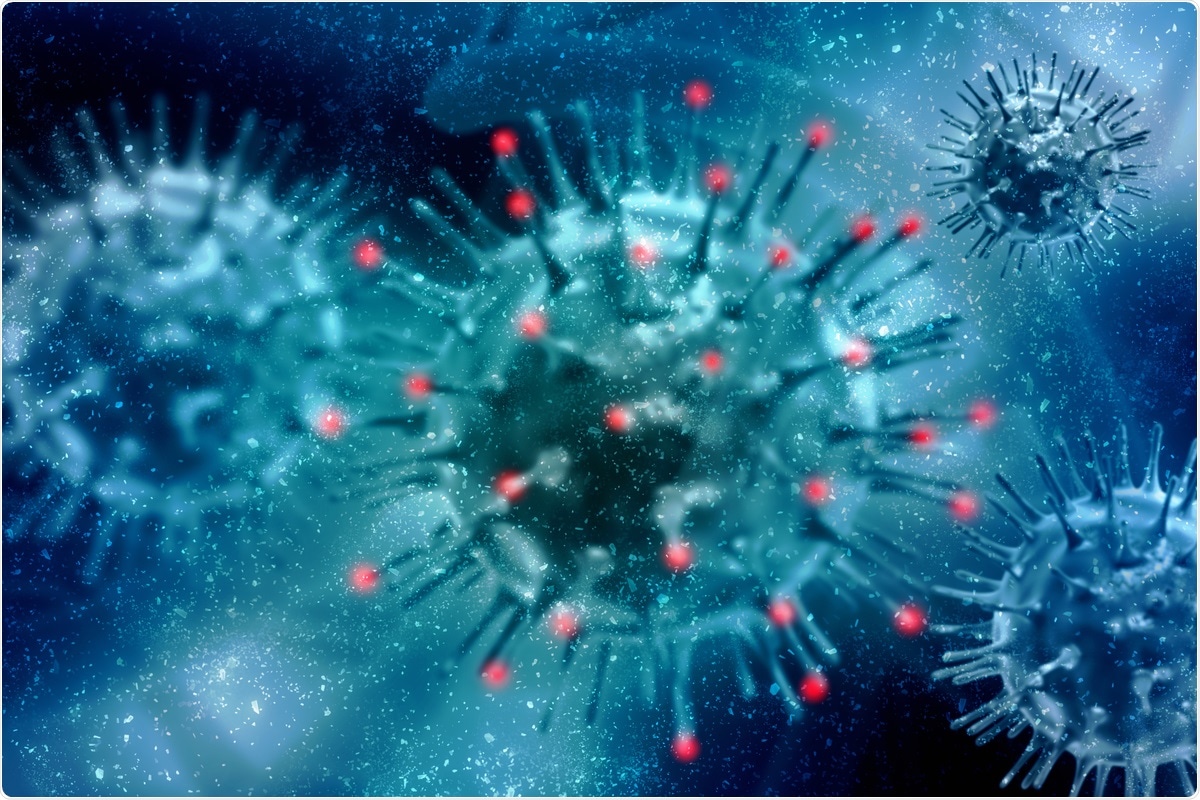Since the coronavirus disease 2019 (COVID-19) pandemic spread around the world, researchers across the globe have been analyzing severe acute respiratory syndrome 2 (SARS-CoV-2), as well as similar viruses such as severe acute respiratory virus coronavirus (SARS-CoV-1) and Middle East respiratory syndrome coronavirus (MERS-CoV). As CCoV-HuPn-2018 has been recently isolated in a child's respiratory swab, researchers from the University Of Washington have been examining the structure of the virus.
 Study: Structure, receptor recognition and antigenicity of the human coronavirus CCoV-HuPn-2018 spike glycoprotein. Image Credit: jijomathaidesigners/ Shutterstock
Study: Structure, receptor recognition and antigenicity of the human coronavirus CCoV-HuPn-2018 spike glycoprotein. Image Credit: jijomathaidesigners/ Shutterstock
A preprint version of the group's study is available on the bioRxiv* server, while the article undergoes peer review.
The study
Most vaccines and tests for SARS-CoV-2 target the spike protein. Many copies of this homotrimer sit on the virus's surface, and it is key to the pathogenicity of SARS-CoV-2. The spike protein follows a similar conformation in most coronaviruses, although the specific receptors change. The S1 subunit contains a receptor-binding domain (RBD) that binds to a receptor on the cell surface (in this case, angiotensin-converting enzyme 2 (ACE2)) to allow viral cell entry while the S2 subunit mediates membrane fusion.
The researchers used cryo-electron microscopy (cryoEM) to visualize the infection machinery of CCoV-HuPn-2018, specifically the spike protein trimer. In this coronavirus, the spike protein has a triangular cross-section and contains an N-terminal S1 subunit divided into domains known as 0 and A-D. The S2 subunit is located at the C-terminal and contains machinery that allows for the fusion of the viral and cell membranes. The scientists used 3D classification to reveal two distinct spike protein conformations, with the 0 domain either proximal – oriented towards the membrane or 'swung out.' Local refinement allowed them to obtain reconstructions at both states.
The spike protein trimer is decorated with oligosaccharides across both subunits. Twenty-four out of the 32 N-linked glycosylation sequons are resolved in cryoEM maps. The S1 subunit appears most similar to another coronavirus linked to the common cold, while the S2 subunit is more similar to the porcine epidemic diarrhea virus (PEDV) and feline peritonitis virus (FIPV).
The B domains remain in a closed state in both the proximal and swung-out conformations. Still, the A domain can move rapidly based on the different positions, allowing it to form strong interactions with the C domain if swung out. Domain A of the S1 subunit folds as a galectin-like beta-sandwich seen in many other coronaviruses. The B domain is very similar to several other viruses that it shares similar genetic sequences with, including porcine respiratory coronavirus (PRCV) and transmissible gastroenteritis virus (TGEV), as well as several other coronaviruses.
Following this, the researchers evaluated the ability of the B domain to bind with aminopeptidase N (APN) orthologs that PRCV and TGEV can bind. Human APN could not recognize the biotinylated immobilized B domain, but feline, canine and porcine APNs could. The canine APN showed the strongest affinity. Pull-down assays showed the same results, suggesting that CCoV-HuPn-2018 can use several orthologs as receptors.
Using vesicular stomatitis virus (VSV) pseudotyped with CCoV-HuPn-2018 spike proteins, TGEV spike proteins, or HCoV-229E spike proteins, the scientists assessed the ability of APN orthologs to promote cell entry. Once again, the feline, canine and porcine APNs promoted rendered HEK cells susceptible to infection by the pseudovirus, but not human APNs. Cell lines isolated from canines and felines also proved susceptible. This is likely due to the absence of an N-linked oligosaccharide at position N739 in the human APN, preventing binding of the RBD in porcine APN. When the mutant human APN with this residue present was knocked in, the cells could be infected by the pseudovirus.
Most of the spike protein divergence between CCoV-HuPn-2018 andHCoV-229E and HCoV-NL63 is seen in the S1 subunit. To investigate the neutralization of this virus due to infection by other strains, the researchers evaluated the ability of human plasma obtained between 1985 and 1987 from individuals known to have been infected with HCoV-229E. Plasma from these individuals could prevent infection from the pseudovirus but showed reduced potency.
Conclusion
The authors highlight the importance of their study in helping to describe the structure of CCoV-HuPn-2018 and the binding ability of the spike protein. Knowing the mutation in human APN that allows avoidance of spike protein binding could help develop drugs if the disease becomes a major problem. Still, the data strongly suggests that this coronavirus is not well adapted for infection of human hosts or replication within human cells.
*Important notice
bioRxiv publishes preliminary scientific reports that are not peer-reviewed and, therefore, should not be regarded as conclusive, guide clinical practice/health-related behavior, or treated as established information
-
Tortorici, MA. et al., (2021) Structure, receptor recognition and antigenicity of the human coronavirus CCoV-HuPn-2018 spike glycoprotein. bioRxiv. doi: https://doi.org/10.1101/2021.10.25.465646 https://www.biorxiv.org/content/10.1101/2021.10.25.465646v1
Posted in: Medical Science News | Medical Research News | Disease/Infection News
Tags: ACE2, Angiotensin, Angiotensin-Converting Enzyme 2, Cell, Cold, Common Cold, Coronavirus, Coronavirus Disease COVID-19, Diarrhea, Drugs, Electron, Electron Microscopy, Enzyme, Gastroenteritis, Genetic, Glycoprotein, Glycosylation, Membrane, MERS-CoV, Microscopy, Mutation, Pandemic, Peritonitis, Protein, Pseudovirus, Receptor, Respiratory, Respiratory Virus, SARS, SARS-CoV-2, Severe Acute Respiratory, Severe Acute Respiratory Syndrome, Spike Protein, Stomatitis, Syndrome, Virus

Written by
Sam Hancock
Sam completed his MSci in Genetics at the University of Nottingham in 2019, fuelled initially by an interest in genetic ageing. As part of his degree, he also investigated the role of rnh genes in originless replication in archaea.
Source: Read Full Article
